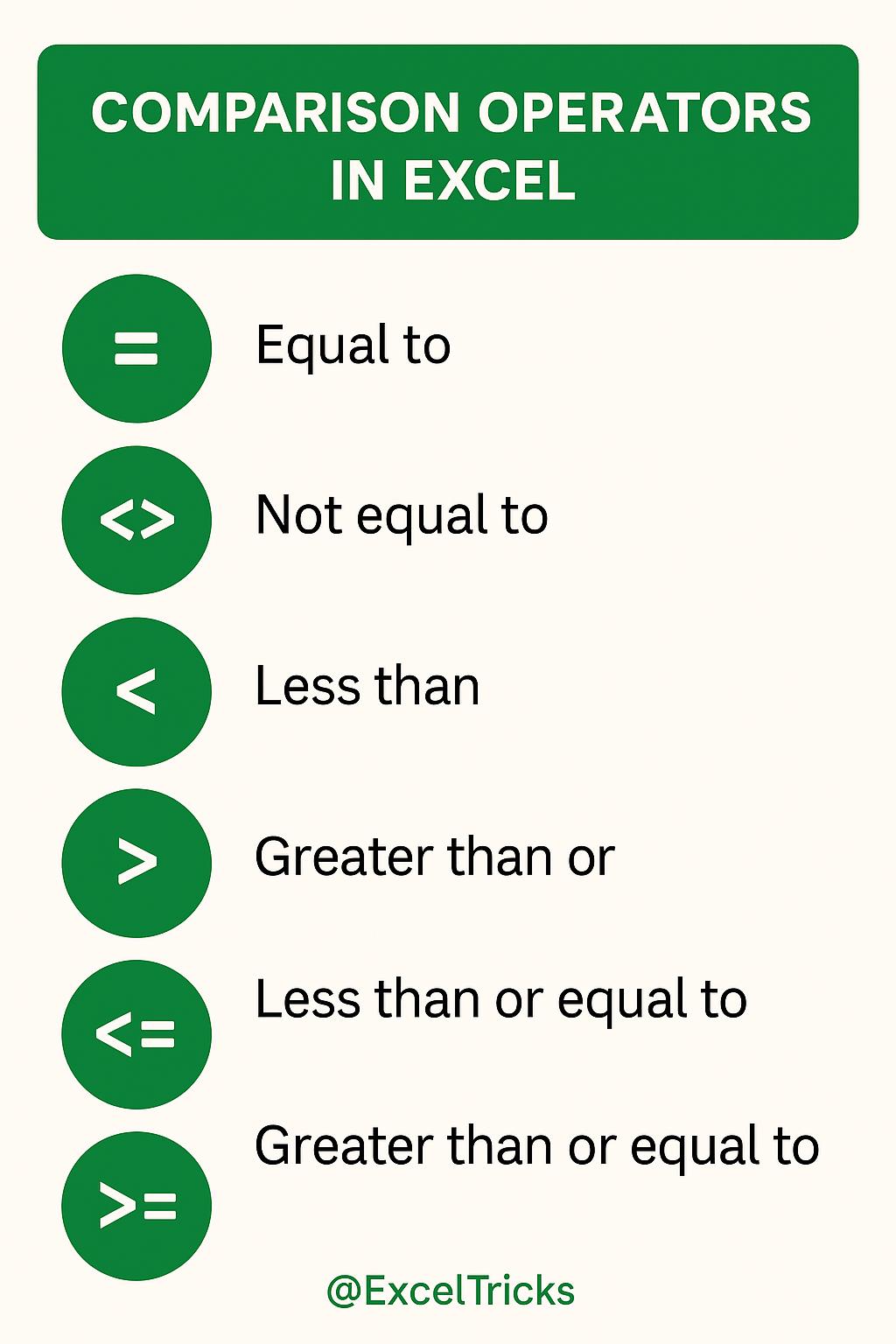October 28, 2025
Comparison Operators in Excel
4.9 (182)
Comparison operators are used in Excel formulas to compare two values, and the result is either TRUE or FALSE. They are essential for creating logical tests within functions like IF.
Related reading
Combine the IF and OR functions to test multiple conditions in a spreadsheet program.
Excel Keyboard Shortcuts – Boost Your Productivity
Mastering keyboard shortcuts can dramatically speed up your workflow in Excel. These shortcuts are divided into two main categories: Cell Formatting and Other Important Shortcuts.

➤ Common Comparison Operators
-
= Equal to: Checks if two values are the same.
Example:=A1=B1returns TRUE if A1 is identical to B1. -
<> Not equal to: Checks if two values are different.
Example:=A1<>B1returns TRUE if A1 and B1 are different. -
> Greater than: Checks if the first value is larger.
Example:=A1>B1returns TRUE if A1 is greater than B1. -
< Less than: Checks if the first value is smaller.
Example:=A1<B1returns TRUE if A1 is less than B1. -
>= Greater than or equal to: Checks if the first value is larger or equal.
Example:=A1>=B1returns TRUE if A1 ≥ B1. -
<= Less than or equal to: Checks if the first value is smaller or equal.
Example:=A1<=B1returns TRUE if A1 ≤ B1.
⚠️ Note: The = operator is not case-sensitive when comparing text strings. For case-sensitive comparisons, use the EXACT function.